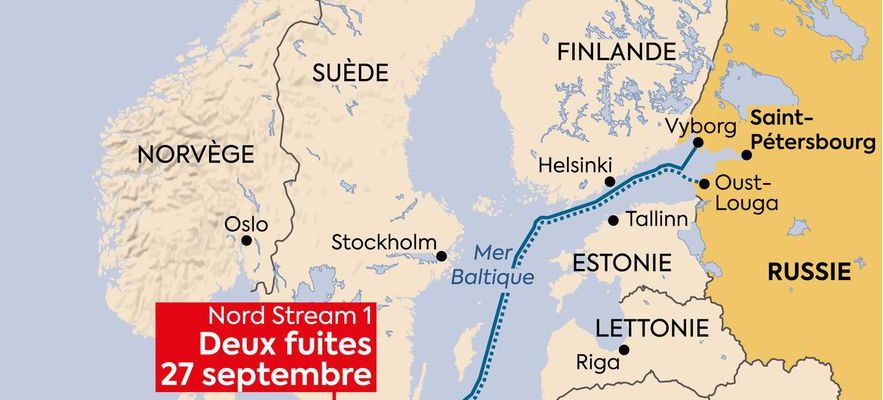The responsibility for the sabotage of the Nord Stream 1 and 2 gas pipelines, which occurred on September 26, 2022, remains a mystery. But seven months after the spectacular sabotage of these strategic gas pipelines linking Russia to Germany, new elements appear and point the beam a little more in the direction of Moscow.
According to the Danish daily Information, a Russian Navy ship specializing in underwater operations was present near the scene of the sabotage shortly before the explosions. In its edition of Friday, April 28, the newspaper indicates that the Danish army has confirmed to it that it has 26 photographs of the Russian ship SS-750, which includes a midget submarine. These photos were taken in the area east of Bornholm (Baltic Sea), from a Danish patrol boat, four days before the September 26 explosions.
Reports had previously emerged that the Norwegian Defense Command is believed to be in possession of 112 images of Russian ships in the area, says Information.
A ship designed for underwater operations
Asked by AFP, the Danish army did not wish to react immediately. Mats Ljungqvist, the prosecutor in charge of the investigation on the Swedish side, concisely confirmed to the press agency the information which had not been made public so far. “I was aware of this information. On its significance to the investigation, I cannot comment because the preliminary investigation is conditional,” he said.
Map
© / Dario Ingiusto / L’Express
“The SS-750 special vessel is designed to carry out operations under the sea and has an AS-26 Priz type mini-submarine on board”, specifies the Danish daily. For analyst Jacob Kaarsbo, a former Danish military intelligence officer, the presence of the SS-750 in the area “sheds light on what was happening in the region in the previous days”. The confirmation of his presence in the sector is particularly interesting, “because we know that he has the capacity to carry out such an operation”, he declared to Information. “It’s incredibly interesting. The SS-750 is a special vessel designed precisely for underwater operations”, also deciphers the Swedish researcher Joakim von Braun.
What was the SS-750 doing in the area, four days before the blasting of the two gas pipelines? For Joakim von Braun, “it is very likely that these ships were involved in the sabotage operation”. Moreover, mention Informationthe very fact that Danish, Swedish and Polish patrol boats were sent to the area at that time confirms that, for these countries, “something suspicious happened around September 21-22”.
“A Complex Case”
Criminal investigations into this sabotage have been launched in several countries: Germany, Sweden and Denmark. At the end of March, Denmark announced that it had brought up a cylindrical object spotted near the sabotaged Nord Stream 2 gas pipeline and which turned out to be a smoke buoy. A representative of the owner company Nord Stream 2 AG, of which the Russian Gazprom is the majority shareholder, had participated in the recovery.
The New York Times had told him in early March, on the basis of information consulted by American intelligence, that a “pro-Ukrainian group” would be behind the sabotage, but without the involvement of Ukrainian President Volodymyr Zelensky.
Germany had announced at the same time to investigate a boat suspected of having transported the explosives to the site, without being able to draw any conclusions on the identity of the perpetrators. The only certainty: this sabotage is linked to the invasion of Ukraine by Russia, but “it is a difficult and complex affair”, explained in early April the Swedish prosecutor Mats Ljungqvist, who is taking part in the investigation. “Our main hypothesis is that a State is behind” this sabotage, the prosecution had then indicated.
Who is responsible for it? It is “still not clear”, added the prosecutor. Washington and Moscow denied any responsibility and accused each other of being behind it. Mats Ljungqvist had stressed that the facts took place “80 meters deep in the Baltic Sea”. Those responsible must have acted “knowing full well that they would leave traces behind” them. For years, the two pipelines have been at the center of geopolitical tensions, stoked after Moscow’s decision to cut off gas supplies to Europe in alleged retaliation for Western sanctions.
